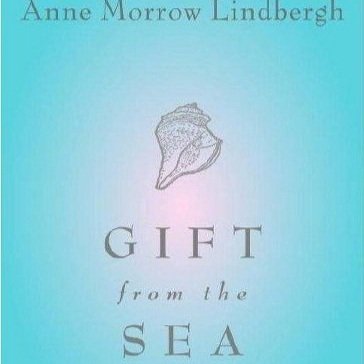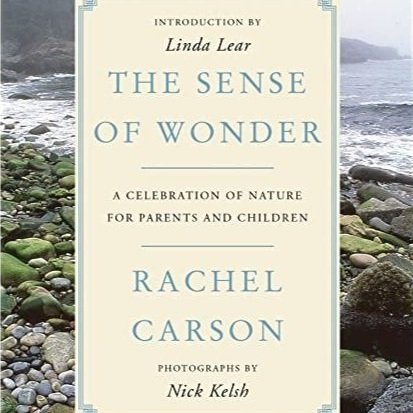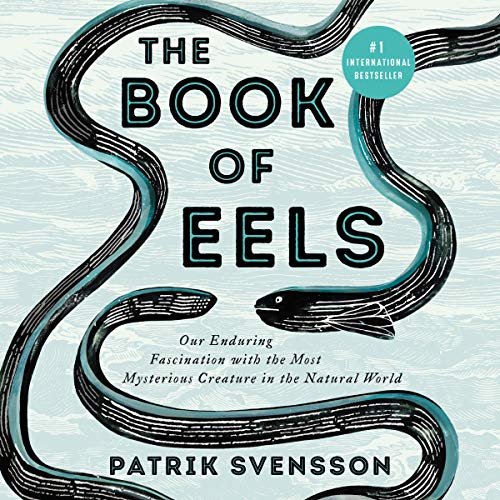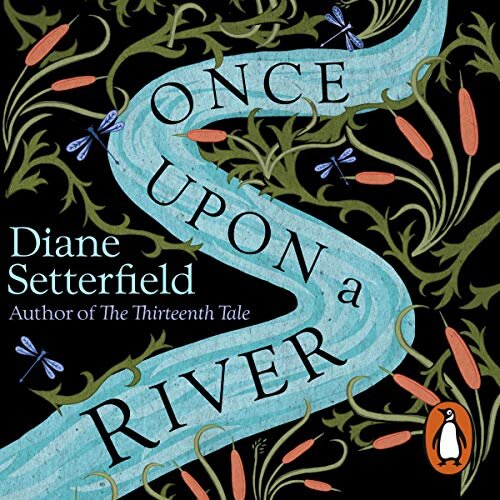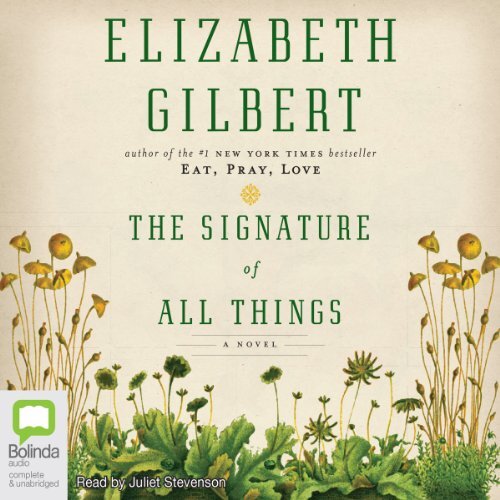TreeSong’s Nature Book Group meets once a month at the homes of group members. We focus on nature-inspired books that the group chooses. If you are interested in joining us, please Contact us.
CURRENT READ
December: Poetry month — bring a poem! And choose books for 2024.
Upcoming Reads
TBD!
past reads
Comprising a selection of essays, Upstream finds beloved poet Mary Oliver reflecting on her astonishment and admiration for the natural world and the craft of writing.
As she contemplates the pleasure of artistic labor, finding solace and safety within the woods, and the joyful and rhythmic beating of wings, Oliver intimately shares with her readers her quiet discoveries, boundless curiosity, and exuberance for the grandeur of our world.
— Goodreads
State of Wonder
by Ann Patchett
In a narrative replete with poison arrows, devouring snakes, scientific miracles, and spiritual transformations, "State of Wonder" presents a world of stunning surprise and danger, rich in emotional resonance and moral complexity.
As Dr. Marina Singh embarks upon an uncertain odyssey into the insect-infested Amazon, she will be forced to surrender herself to the lush but forbidding world that awaits within the jungle.
Charged with finding her former mentor Dr. Annick Swenson, a researcher who has disappeared while working on a valuable new drug, she will have to confront her own memories of tragedy and sacrifice as she journeys into the unforgiving heart of darkness.
Gift from the Sea
by Ann Morrow Lindbergh
Anne Morrow Lindbergh shares her meditations on youth and age; love and marriage; peace, solitude and contentment as she set them down during a brief vacation by the sea. Drawing inspiration from the shells on the shore, Lindbergh’s musings on the shape of a woman’s life bring new understanding to both men and women at any stage of life. A mother of five, an acclaimed writer and a pioneering aviator, Lindbergh casts an unsentimental eye on the trappings of modernity that threaten to overwhelm us: the time-saving gadgets that complicate rather than simplify, the multiple commitments that take us from our families. And by recording her thoughts during a brief escape from everyday demands, she helps readers find a space for contemplation and creativity within their own lives.
Earth Abides
by George R. Stewart
A disease of unparalleled destructive force has sprung up almost simultaneously in every corner of the globe, all but destroying the human race. One survivor, strangely immune to the effects of the epidemic, ventures forward to experience a world without man. What he ultimately discovers will prove far more astonishing than anything he'd either dreaded or hoped for.
The Collector: David Douglas and the Natural History of the Northwest
by Jack Nisbet
The Collector tracks [David] Douglas's fascinating history, from his humble birth in Scotland in 1799 to his botanical training under the famed William Jackson Hooker, and details his adventures in North America discovering exotic new plants for the English and European market. The book takes readers along on Douglas's journeys into a literal brave new world of then-obscure realms from Puget Sound to the Sandwich Islands. In telling Douglas's story, Nisbet evokes a lost world of early exploration, pristine nature, ambition, and cultural and class conflict with surprisingly modern resonances.
The Sense of Wonder: A Celebration of Nature for Parents and Children
by Rachel Carson
Stunning new photographs by Nick Kelsh beautifully complement Carson's intimate account of adventures with her young nephew, Roger, as they enjoy walks along the rocky coast of Maine and through dense forests and open fields, observing wildlife, strange plants, moonlight and storm clouds, and listening to the "living music" of insects in the underbrush. "If a child is to keep alive his inborn sense of wonder." Writes Carson, "he needs the companionship of at least one adult who can share it, rediscovering with him the joy, excitement and mystery of the world we live in." The Sense of Wonder is a refreshing antidote to indifference and a guide to capturing the simple power of discovery that Carson views as essential to life.
Last Child in the Woods
by Richard Louv
"I like to play indoors better 'cause that's where all the electrical outlets are," reports a fourth-grader. Never before in history have children been so plugged in―and so out of touch with the natural world. In this groundbreaking new work, child advocacy expert Richard Louv directly links the lack of nature in the lives of today's wired generation―he calls it nature deficit―to some of the most disturbing childhood trends, such as rises in obesity, Attention Deficit Disorder (ADD), and depression.
The Nature of Oaks
by Douglas Tallamy
Oaks sustain a complex and fascinating web of wildlife. The Nature of Oaks reveals what is going on in oak trees month by month, highlighting the seasonal cycles of life, death, and renewal. From woodpeckers who collect and store hundreds of acorns for sustenance to the beauty of jewel caterpillars, Tallamy illuminates and celebrates the wonders that occur right in our own backyards. He also shares practical advice about how to plant and care for an oak, along with information about the best oak species for your area. The Nature of Oaks will inspire you to treasure these trees and to act to nurture and protect them.
The Sixth Extinction
by Elizabeth Kolbert
In prose that is at once frank, entertaining, and deeply informed, The New Yorker writer Elizabeth Kolbert tells us why and how human beings have altered life on the planet in a way no species has before. Interweaving research in half a dozen disciplines, descriptions of the fascinating species that have already been lost, and the history of extinction as a concept, Kolbert provides a moving and comprehensive account of the disappearances occurring before our very eyes. She shows that the sixth extinction is likely to be mankind's most lasting legacy, compelling us to rethink the fundamental question of what it means to be human.
Perestroika in Paris
by Jane Smiley
From the Pulitzer Prize-winning author of A Thousand Acres and the New York Times best-selling Last Hundred Years Trilogy, a captivating, brilliantly imaginative story of three extraordinary animals--and a young boy--whose lives intersect in Paris… Jane Smiley's beguiling new novel is itself an adventure that celebrates curiosity, ingenuity, and the desire of all creatures for true love and freedom.
The Book of Eels: Our Enduring Fascination with the Most Mysterious Creature in the Natural World
by Patrik Svensson
Drawing on a breadth of research about eels in literature, history, and modern marine biology, as well as his own experience fishing for eels with his father, Patrik Svensson writes a book about this unusual animal… Blending memoir and nature writing, Svensson’s journey to understand the eel becomes an exploration of the human condition that delves into overarching issues about our roots and destiny, both as humans and as animals, and, ultimately, how to handle the biggest question of all: death.
The Plover
by Brian Doyle
Declan O Donnell has left Oregon aboard his boat, the Plover, to escape the life that’s so troubled him on land. He sets course west into the Pacific in search of solitude. Instead, he finds a crew, each in search of something themselves, and what at first seems a lonely sea voyage becomes a rapturous, heartfelt celebration of life’s surprising paths, planned and unplanned.
Finding the Mother Tree
by Suzanne Simard
Suzanne Simard is a pioneer on the frontier of plant communication and intelligence; she's been compared to Rachel Carson, hailed as a scientist who conveys complex, technical ideas in a way that is dazzling and profound. Her work has influenced filmmakers (the Tree of Souls of James Cameron's Avatar) and her TED talks have been viewed by more than 10 million people worldwide.
Now, in her first book, Simard brings us into her world, the intimate world of the trees, in which she brilliantly illuminates the fascinating and vital truths--that trees are not simply the source of timber or pulp, but are a complex, interdependent circle of life; that forests are social, cooperative creatures connected through underground networks by which trees communicate their vitality and vulnerabilities with communal lives not that different from our own.
Mozart’s Starling
by Lyanda Lynn Haupt
On May 27th, 1784, Wolfgang Amadeus Mozart met a flirtatious little starling who sang (an improved version of!) the theme from his Piano Concerto Number 17 in G to him. Knowing a kindred spirit when he met one, Mozart wrote "That was wonderful" in his journal and took the bird home to be his pet. For three years Mozart and his family enjoyed the uniquely delightful company of the starling until one fitful April when the bird passed away.
In 2013, Lyanda Lynn Haupt, author of Crow Planet, rescued her own starling, Carmen, who has become a part of her family. In Mozart's Starling, Haupt explores the unlikely bond between one of history's most controversial characters and one of history's most notoriously disliked birds. Part natural history, part story, Mozart's Starling will delight readers as they learn about language, music, and the secret world of starlings.
The Blue Bear
by Lynn Schooler
With a body twisted by adolescent scoliosis and memories of the brutal death of a woman he loved, Lynn Schooler kept the world at arm's length, drifting through the wilds of Alaska as a commercial fisherman, outdoorsman, and wilderness guide. In 1990, Schooler met Japanese photographer Michio Hoshino, and began a profound friendship cemented by a shared love of adventure and a passionate quest to find the elusive glacier bear, an exceedingly rare creature, seldom seen and shrouded in legend. But only after Hoshino's tragic death from a bear attack does Schooler succeed in photographing the animal -- completing a remarkable journey that ultimately brings new meaning to his life.
Bicycling with Butterflies
by Sarah Dykman
Sara Dykman made history when she became the first person to bicycle alongside monarch butterflies on their storied annual migration… In Bicycling with Butterflies, Dykman recounts her incredible journey and the dramatic ups and downs of the nearly nine-month odyssey. We’re beside her as she navigates unmapped roads in foreign countries, checks roadside milkweed for monarch eggs, and shares her passion with eager schoolchildren, skeptical bar patrons, and unimpressed border officials. With both humor and humility, Dykman offers a compelling story, confirming the urgency of saving the threatened monarch migration—and the other threatened systems of nature that affect the survival of us all.
Fishing the Wild Waters
by Conor Sullivan
Fishing the Wild Waters invites us to traverse America and visit three distant and distinct dream destinations for any serious angler—and anyone who aspires to someday become one. Sullivan's marvelous debut illuminates the often profound nature of fishing as a vehicle that connects those who practice it with reverence to a world beyond the one humans created.
One Man’s Wilderness: An Alaskan Odyssey
by Sam Keith
To live in a pristine land unchanged by man...to roam a wilderness through which few other humans have passed...to choose an idyllic site, cut trees and build a log cabin...to be a self-sufficient craftsman, making what is needed from materials available...to be not at odds with the world but content with one's own thoughts and company. Thousands have had such dreams, but Richard Proenneke lived them. He found a place, built a cabin, and stayed to become part of the country. One Man's Wilderness is a simple account of the day-to-day explorations and activities he carried out alone, and the constant chain of nature's events that kept him company.
Let the Mountains Talk, Let the Rivers Run
by David Brower, with Steve Chapple
Credited with galvanizing an entire generation of environmentalists in the 60's, David Brower, the highly respected "archdruid" of the modern environmental movement, recalls with wit and wisdom his 50 years of controversial activism and offers an inspired strategy for the next generation of "those who would save the Earth."
Beloved Beasts: Fighting for Life in an Age of Extinction
by Michelle Nijhuis
In the late nineteenth century, as humans came to realize that our rapidly industrializing and globalizing societies were driving other animal species to extinction, a movement to protect and conserve them was born. In Beloved Beasts, acclaimed science journalist Michelle Nijhuis traces the movement’s history: from early battles to save charismatic species such as the American bison and bald eagle to today’s global effort to defend life on a larger scale.
The Forest Unseen: A Year’s Watch in Nature
by David Haskell
In this wholly original book, biologist David Haskell uses a one-square-meter patch of old-growth Tennessee forest as a window onto the entire natural world. Visiting it almost daily for one year to trace nature’s path through the seasons, he brings the forest and its inhabitants to vivid life.
The Radiant Lives of Animals
by Linda Hogan
Concerned that human lives and the natural world are too often defined by people who are separated from the land and its inhabitants, Indigenous writer and environmentalist Linda Hogan depicts her own intense relationships with animals as an example we all can follow to heal our souls and reconnect with the spirit of the world.
Ravens in Winter
by Bernd Heinrich
Why should ravens--which are usually solitary birds--share valuable food in the dead of winter? How clever are these birds? Do they have a language? These are some of the riddles that noted sociobiologist Bernd Heinrich, author of Bumblebee Economics and winner of the John Burroughs Medal, explores in this intriguing book.
The Bear
by Andrew Krivak
In an Eden-like future, a girl and her father live close to the land in the shadow of a lone mountain. The father teaches his daughter how to fish and hunt and the secrets of the seasons and the stars. He is preparing her for an adulthood in harmony with nature, for they are the last of humankind. But when the girl finds herself alone in an unknown landscape, it is a bear that will lead her back home through a vast wilderness that offers the greatest lessons of all, if she can learn to listen. A cautionary tale of human fragility, of love and loss, The Bear is a stunning tribute to the beauty of nature’s dominion.
Eager: The Surprising, Secret Life of Beavers and Why They Matter
by Ben Goldfarb
Eager is a powerful story about one of the world’s most influential species, how North America was colonized, how our landscapes have changed over the centuries, and how beavers can help us fight drought, flooding, wildfire, extinction, and the ravages of climate change. Ultimately, it’s about how we can learn to coexist, harmoniously and even beneficially, with our fellow travelers on this planet.
The Home Place
by J. Drew Lanham
“In me, there is the red of miry clay, the brown of spring floods, the gold of ripening tobacco. All of these hues are me; I am, in the deepest sense, colored.” From these fertile soils of love, land, identity, family, and race emerges The Home Place, a big-hearted, unforgettable memoir by ornithologist and professor of ecology J. Drew Lanham.
Once Upon A River
by Diane Setterfield
On a dark midwinter’s night in an ancient inn on the river Thames, an extraordinary event takes place. The regulars are telling stories to while away the dark hours, when the door bursts open on a grievously wounded stranger. In his arms is the lifeless body of a small child. Hours later, the girl stirs, takes a breath and returns to life. Is it a miracle? Is it magic? Or can science provide an explanation?
Entangled Life: How Fungi Make Our Worlds, Change Our Minds & Shape Our Futures
by Merlin Sheldrake
In this captivating adventure, Merlin Sheldrake explores the spectacular and neglected world of fungi: endlessly surprising organisms that sustain nearly all living systems.
The Signature of All Things
by Elizabeth Gilbert
In The Signature of All Things, Elizabeth Gilbert returns to fiction, inserting her inimitable voice into an enthralling story of love, adventure and discovery. Spanning much of the eighteenth and nineteenth centuries, the novel follows the fortunes of the extraordinary Whittaker family as led by the enterprising Henry Whittaker—a poor-born Englishman who makes a great fortune in the South American quinine trade, eventually becoming the richest man in Philadelphia. Born in 1800, Henry's brilliant daughter, Alma (who inherits both her father's money and his mind), ultimately becomes a botanist of considerable gifts herself.
The Soil Will Save Us
by Kristin Ohlson
In The Soil Will Save Us, journalist and bestselling author Kristin Ohlson makes an elegantly argued, passionate case for "our great green hope"—a way in which we can not only heal the land but also turn atmospheric carbon into beneficial soil carbon—and potentially reverse global warming.
Endurance
by Alfred Lansing
The harrowing tale of British explorer Ernest Shackleton's 1914 attempt to reach the South Pole, one of the greatest adventure stories of the modern age.
The Promise of the Grand Canyon
by John F. Ross
A timely, thrilling account of a man who, as an explorer, dared to lead the first successful expedition down the Colorado through the Grand Canyon—and, as an American visionary, waged a bitterly-contested campaign for environmental sustainability in the American West.
Flight Behavior
by Barbara Kingsolver
Flight Behavior takes on one of the most contentious subjects of our time: climate change. With a deft and versatile empathy Kingsolver dissects the motives that drive denial and belief in a precarious world… Characters and reader alike are quickly carried beyond familiar territory here, into the unsettled ground of science, faith, and everyday truces between reason and conviction.
Temperance Creek
by Pamela Royes
In the austere beauty and natural reality of Hell’s Canyon of Eastern Oregon, one hundred miles from pavement, Pam, unable to identify with her parent’s world and looking for deeper pathways has a chance encounter with returning Vietnam warrior Skip Royes. Skip, looking for a bridge from survival back to connection, introduces Pam to the vanishing culture of the wandering shepherd and together they embark on a four-year sojourn into the wilderness.
How to Catch a Mole
by Marc Hamer
A life-affirming book about the British countryside, the cycle of nature, solitude and contentment, through the prism of a brilliant new nature writer’s experience working as a traditional mole-catcher, and why he gave it up.
Birds, Beasts, and Relatives
by Gerald Durell
Part coming-of-age autobiography and part nature guide, Gerald Durrell's dazzling sequel to My Family and Other Animals is based on his boyhood on Corfu, from 1933 to 1939.
Deep Water Passage
by Ann Linnea
This engrossing adventure and . . . story of spiritual awakening and inspiration (Publishers Weekly) tells the true story of Ann Linnea, the first woman to circumnavigate Lake Superior by sea kayak.
Where the Crawdads Sing
by Delia Owens
Perfect for fans of Barbara Kingsolver and Karen Russell, Where the Crawdads Sing is at once an exquisite ode to the natural world, a heartbreaking coming-of-age story, and a surprising tale of possible murder. Owens reminds us that we are forever shaped by the children we once were, and that we are all subject to the beautiful and violent secrets that nature keeps.
Sastun
by Rosita Arvigo
The compelling drama of American herbologist Rosita Arvigo's quest to preserve the knowledge of Don Elijio Panti, one of the last surviving and most respected traditional healers in the rainforest of Belize.
Desert Solitaire
by Edward Abbey
First published in 1968, Desert Solitaire is one of Edward Abbey’s most critically acclaimed works and marks his first foray into the world of nonfiction writing. Written while Abbey was working as a ranger at Arches National Park outside of Moab, Utah, Desert Solitaire is a rare view of one man’s quest to experience nature in its purest form.
Through prose that is by turns passionate and poetic, Abbey reflects on the condition of our remaining wilderness and the future of a civilization that cannot reconcile itself to living in the natural world as well as his own internal struggle with morality. As the world continues its rapid development, Abbey’s cry to maintain the natural beauty of the West remains just as relevant today as when this book was written.
Hermit’s Story
by Rick Bass
In the title story, a man and a woman travel across an eerily frozen lake—under the ice. “The Distance” casts a skeptical eye on Thomas Jefferson through the lens of a Montana man’s visit to Monticello. “Eating” begins with an owl being sucked into a canoe and ends with a man eating a town out of house and home, and “The Cave” is a stunning story of a man and woman lost in an abandoned mine. Other stories include “The Fireman,” “Swans,” “The Prisoners,” “Presidents’ Day,” “Real Town,” and “Two Deer.”
Gathering Moss
by Robin Wall Kimmerer
Living at the limits of our ordinary perception, mosses are a common but largely unnoticed element of the natural world. Gathering Moss is a beautifully written mix of science and personal reflection that invites readers to explore and learn from the elegantly simple lives of mosses.
The Overstory
by Richard Powers
In his twelfth novel, National Book Award winner Richard Powers delivers a sweeping, impassioned novel of activism and resistance that is also a stunning evocation of—and paean to—the natural world. From the roots to the crown and back to the seeds, The Overstory unfolds in concentric rings of interlocking fables that range from antebellum New York to the late twentieth-century Timber Wars of the Pacific Northwest and beyond, exploring the essential conflict on this planet: the one taking place between humans and nonhumans. There is a world alongside ours—vast, slow, interconnected, resourceful, magnificently inventive, and almost invisible to us. This is the story of a handful of people who learn how to see that world and who are drawn up into its unfolding catastrophe.
The Overstory is a book for all readers who despair of humanity’s self-imposed separation from the rest of creation and who hope for the transformative, regenerating possibility of a homecoming. If the trees of this earth could speak, what would they tell us? “Listen. There’s something you need to hear.”
The River Why
by David Duncan
This captivating and exuberant tale is told by Gus Orviston, an irreverent young fly fisherman and one of the most appealing heroes in contemporary American fiction. Leaving behind a madcap, fishing-obsessed family, Gus decides to strike out on his own, taking refuge in a secluded cabin on a remote riverbank to pursue his own fly-fishing passion with unrelenting zeal. But instead of finding fishing bliss, Gus becomes increasingly troubled by the degradation of the natural world around him and by the spiritual barrenness of his own life. His desolation drives him on a reluctant quest for self-discovery and meaning, ultimately fruitful beyond his wildest dreams.
Here, then, is a funny, sensitive, unforgettable story about the relationships among men, women, the environment, and the human soul.
Following Atticus
by Tom Ryan
Following Atticus is an unforgettable true saga of adventure, friendship, and the unlikeliest of family, as one remarkable animal opens the eyes and heart of a tough-as-nails newspaperman to the world’s beauty and its possibilities.
After a close friend died of cancer, middle-aged, overweight, acrophobic newspaperman Tom Ryan decided to pay tribute to her in a most unorthodox manner. Ryan and his friend, miniature schnauzer Atticus M. Finch, would attempt to climb all forty-eight of New Hampshire’s four-thousand-foot peaks twice in one winter while raising money for charity. At the heart of the amazing journey was the extraordinary relationship they shared, one that blurred the line between man and dog.
Lab Girl
by Hope Jahren
In Lab Girl, Acclaimed scientist Hope Jahren has built three laboratories in which she’s studied trees, flowers, seeds, and soil. Her first book is a revelatory treatise on plant life—but it is also so much more.
“Lab Girl” is a book about work, love, and the mountains that can be moved when those two things come together. It is told through Jahren’s stories: about her childhood in rural Minnesota with an uncompromising mother and a father who encouraged hours of play in his classroom’s labs; about how she found a sanctuary in science, and learned to perform lab work done “with both the heart and the hands”; and about the inevitable disappointments, but also the triumphs and exhilarating discoveries, of scientific work.
Your Guide to Forest Bathing
by M. Amos Clifford
In Your Guide to Forest Bathing, M. Amos Clifford draws on four decades of wilderness experience to introduce readers to the medicine of being in the forest. Forest bathing is a gentle, meditative practice that inspires us to connect with nature as a way to help heal ourselves as well as the planet and humanity.
Forest Therapy is a research-based framework for supporting healing and wellness through immersion in forests and other natural environments. In Japan, forest bathing is known as shinrin-yoku. Studies there have demonstrated a wide variety of health benefits, especially in the cardiovascular and immune systems, and for stabilizing and improving mood and cognition. Learn about the roots of the practice, how to deepen your relationship to nature, and how to begin a practice of your own. Practical matters such as finding a suitable trail and what to bring are also included.
My Story as Told by Water
by David James Duncan
David James Duncan, award-winning author of “The River Why,” braids his contemplative, activist, and rhapsodic voices together into a potently distinctive whole, speaking with power and urgency about the vital connections between our water-filled bodies and this water-covered planet. The twenty-two essays in this collection swirl and eddy around the author’s early-forged bond with the rivers of the Pacific Northwest and their endangered native salmon. With a bracing blend of story, logic, science, and humor, Duncan relates mystical, life-changing fishing adventures; draws incisive portraits of the humans and wild creatures who shaped his destiny… and meditates on the spiritual and practical necessity of acknowledging our dependence on water in its primal state.
A Wolf Called Romeo
by Gerald Durrell
The unlikely true story of a six-year friendship between a wild, oddly gentle black wolf and the people and dogs of Juneau, Alaska. No stranger to wildlife, Nick Jans had lived in Alaska for nearly thirty years. But when one evening at twilight a lone black wolf ambled into view not far from his doorstep, Nick would finally come to know this mystical species—up close as never before. “A Wolf Called Romeo” is the remarkable story of a wolf who returned again and again to interact with the people and dogs of Juneau, living on the edges of their community, engaging in an improbable, awe-inspiring interspecies dance and bringing the wild into sharp focus.
More Past Reads
The Spell of the Sensuous: Perception and Language in a More-Than-Human World by David Abram
Mink River by Brian Doyle.
The Anthropology of Turquoise: Reflections on Desert, Sea, Stone, and Sky by Ellen Meloy
Are We Smart Enough to Know How Smart Animals Are? by Frans de Waal
Sandy, the Sandhill Crane Who Joined Our Family by Dayton O. Hyde
The Soul of an Octopus: A Surprising Exploration into the Wonder of Consciousness by Sy Montgomery
A Sand County Almanac by Aldo Leopold
The Sound of a Wild Snail Eating by Elisabeth Tova Bailey
The Hidden Life of Trees: What They Feel, How They Communicate—Discoveries from a Secret World by Peter Wohllenben.
In The Bears House by N. Scott Momaday
The Sacred Balance by David Suzuki
The Golden Spruce by John Vaillant
Braiding Sweetgrass by Robin Wall Kimmerer
Refuge and Unnatural by Terry Tempest Williams
Animal, Vegetable, Miracle by Barbara Kingsolver
Prodigal Summer by Barbara Kingsolver
